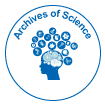Neuroscience of Memory: Mechanisms and Modern Approaches to Understanding the Brain
Received: 01-Mar-2025 / Manuscript No. science-25-168754 / Editor assigned: 03-Mar-2025 / PreQC No. science-25-168754(PQ) / Reviewed: 17-Mar-2025 / QC No. science-25-168754 / Revised: 22-Mar-2024 / Manuscript No. science-25-168754(R) / Published Date: 28-Mar-2025
Abstract
Memory is central to human cognition, governing everything from basic survival instincts to complex reasoning. Recent advances in neuroscience have unraveled the intricate neural networks and molecular mechanisms that encode, store, and retrieve memories. This article explores the biological basis of memory, categorizes its types, discusses the role of the hippocampus and neocortex, and presents modern experimental tools including optogenetics, neuroimaging, and artificial intelligence-based analysis. Furthermore, it investigates how memory disorders like Alzheimer’s disease disrupt these processes, and reviews the future potential for memory enhancement and neuroprosthetics.
Keywords
Memory formation; Hippocampus; Synaptic plasticity; Long-term potentiation; Neurodegeneration; Neuroimaging; Optogenetics; Artificial intelligence; Alzheimer’s disease; Cognitive neuroscience
Introduction
Memory is the cornerstone of the brain's ability to learn and adapt. It underpins our identity, sense of time, and capacity to function within the world. Neuroscience has revealed that memory is not stored in a singular location, but rather involves widespread neural circuits interacting dynamically. Traditionally categorized as short-term or long-term, and declarative or procedural, memory relies on processes such as encoding, consolidation, and retrieval. The hippocampus, medial temporal lobe, and prefrontal cortex are key players in this cognitive system [1]. Understanding the mechanisms of memory is not only critical for cognitive science but also for treating neurodegenerative and psychiatric disorders [2].
Description
Memory formation begins with encoding, where sensory inputs are transformed into neural representations. This is followed by consolidation, a process that stabilizes memory traces via molecular and synaptic changes, often during sleep. The most well-known cellular mechanism underlying memory is long-term potentiation (LTP), where repeated stimulation of synapses strengthens synaptic connections, particularly within the hippocampus [3].
Different memory types are localized to different brain regions. Declarative memory (facts and events) is heavily dependent on the hippocampus, whereas procedural memory (skills and habits) involves the basal ganglia and cerebellum. Working memory—the capacity to hold information temporarily for manipulation—relies on prefrontal cortex activity [4].
Modern neuroscience has benefited immensely from neuroimaging techniques such as fMRI and PET scans, which allow real-time observation of memory-related brain activity. These tools have shown how different types of memory activate distinct but overlapping regions, and how age and disease affect neural efficiency [5]. Moreover, optogenetics, a method of using light to control genetically modified neurons, has enabled scientists to activate or erase specific memories in rodent models by manipulating hippocampal circuits [6].
Results
Neuroscience research has yielded significant findings on memory function and dysfunction. For instance, studies using fMRI have shown that during memory recall, brain regions activated during the original experience are reactivated, a phenomenon known as “neural reinstatement” [7]. Furthermore, experiments in rodents have demonstrated that enhancing LTP through pharmacological or genetic means can improve learning and memory, providing insights for cognitive enhancement therapies [8].
On the pathological front, Alzheimer’s disease offers a tragic yet insightful case. Characterized by the accumulation of β-amyloid plaques and tau protein tangles, it primarily affects the hippocampus and associated cortical regions, leading to memory loss and cognitive decline. Early-stage detection via cerebrospinal biomarkers and imaging of amyloid deposition has become more accurate, thanks to ongoing memory research [9].
Artificial intelligence is also playing an increasingly important role. Machine learning models trained on brain scan data can now predict memory performance, diagnose memory-related diseases earlier, and even decode thoughts associated with specific memories from fMRI data. The Human Connectome Project and BRAIN Initiative are accelerating such integrative approaches [10].
Conclusion
The neuroscience of memory continues to fascinate and challenge researchers as they unravel its biological basis and translate findings into real-world applications. With the aid of cutting-edge technologies like optogenetics, neuroimaging, and AI, the mysteries of memory circuits are becoming increasingly clear. Yet, questions remain about how memories are precisely stored and retrieved, the full implications of memory manipulation, and ethical concerns regarding enhancement technologies. As our knowledge deepens, the field stands on the brink of revolutionizing education, therapy, and human-computer integration, offering promising solutions for cognitive decline and the potential to augment memory capacity in healthy individuals.
Citation: Lionel HC (2025) Neuroscience of Memory: Mechanisms and ModernApproaches to Understanding the Brain. Arch Sci 9: 273.
Copyright: 穢 2025 Lionel HC. This is an open-access article distributed under theterms of the Creative Commons Attribution License, which permits unrestricteduse, distribution, and reproduction in any medium, provided the original author andsource are credited.
Select your language of interest to view the total content in your interested language
Share This Article
91勛圖 Journals
Article Usage
- Total views: 105
- [From(publication date): 0-0 - Aug 29, 2025]
- Breakdown by view type
- HTML page views: 74
- PDF downloads: 31
